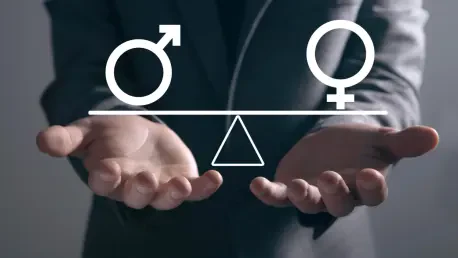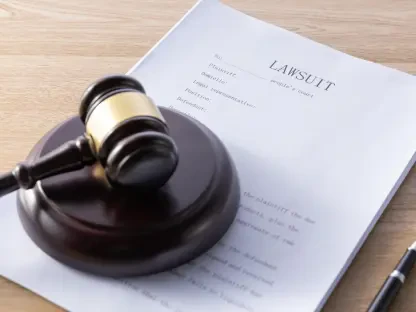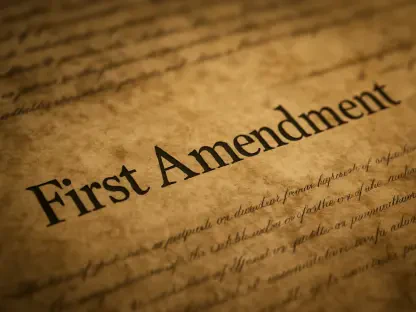In today’s rapidly evolving cultural landscape, the quest for gender equality remains a pressing concern, evidenced by the ongoing debate surrounding the Equal Rights Amendment (ERA). This proposed amendment to the U.S. Constitution aims to ensure that gender does not define the scope of legal rights for any individual. Originally introduced in 1923, the ERA has encountered numerous obstacles but continues to provoke discussion, highlighting persistent issues of unfair pay, unequal employment opportunities, and gender-based discrimination. Such contentious issues are at the core of this discourse, reflecting a broader struggle for gender equality that remains pervasive in modern American society.
Historical Evolution and Legislative Challenges
Early Legislative Attempts and Cultural Context
The ERA was first introduced by suffragist Alice Paul in 1923, an era marked by sharply defined gender roles, where women were expected to conform to specific societal expectations, often relegated to roles in domains such as education and domestic affairs. Despite gaining legal rights, including the right to vote just three years prior, women still faced institutionalized inequality. This historical context underscores why the introduction of the ERA was both progressive and necessary. In 1971, Representative Martha Griffiths reintroduced the ERA, catalyzing a renewed legislative push. This period saw the amendment pass both the House and the Senate, reflecting the shifting political attitudes of the time. However, the ultimate requirement for state ratification proved insurmountable; by the 1982 deadline, it lacked the approval of 38 states, a setback underscoring the entrenched resistance to altering gender norms within American society.
Recent Developments and Continuing Struggles
Despite its stumbling start, the ERA garnered renewed attention in the late 2010s, with Nevada, Illinois, and Virginia eventually ratifying the amendment. These states’ decisions reignited national conversations on gender rights, propelled by evolving societal norms and advocacy from influential public figures. However, the ERA’s legal standing remains nebulous, caught in a mire of judicial ambiguities and legislative inaction, emphasizing ongoing challenges in securing its enactment. Various administrations have grappled with the ERA’s implications, underscoring the complexities of codifying gender equality within the constitutional framework. As public sentiment increasingly favors gender parity, the amendment’s realization appears more plausible than ever, yet it requires overcoming deeply entrenched institutional barriers and cultivating a bipartisan commitment to equality.
The Workforce and Institutional Barriers
The Persistent Gender Pay Gap
The gender pay gap stands out as a predominant issue magnifying gender disparity in the workplace, receiving significant attention. Despite women composing nearly 59% of the workforce, they consistently earn less compared to their male counterparts. This disparity is starkly illustrated by data from 2022, indicating women earned just 99 cents to every dollar men earned, a gap accentuated by the fact that more women than ever are leading households. Despite similar qualifications and commitments, many industries demonstrate a palpable income inequality, particularly in STEM fields, where women remain underrepresented. Such disparities highlight endemic biases that persist despite legislative measures aiming at ensuring equal compensation.
Legal Reforms and Industry Resistance
Numerous laws have been enacted to safeguard women in the workplace—key among them being the 1963 Equal Pay Act and 1972’s Title IX, which aimed to address educational inequities and promote equal employment. Despite these measures, legal loopholes and industry complacency often undermine these efforts. While they represent progress in the right direction, systemic issues impede the realization of equitable pay and career advancement. For example, in sectors like finance and construction, men consistently out-earn women by significant margins despite legislation prohibiting such inequities. This observation underscores the need for robust enforcement of existing laws and possibly the development of new frameworks that more effectively challenge these entrenched disparities.
Sociopolitical Implications and Future Considerations
Cultural Expectations vs. Legislative Reality
Cultural expectations coupled with legal disparities form a battleground for those advocating for gender equality. Although the ERA symbolizes a significant milestone in promoting gender parity, cultural norms often clash with intended legislative reforms. Historical stereotypes continue to hinder significant progress, evident in industries that resist integrating women into roles traditionally dominated by men. As societal norms gradually evolve, aligning cultural expectations with legal requirements remains pivotal in fostering genuine gender equity. Moreover, the ERA could serve as a catalyst in challenging these stereotypes, offering a comprehensive legal basis for contesting discriminatory practices across various sectors.
Strategic Pathways for Progress
In the rapidly evolving cultural landscape of today, achieving gender equality stands as a paramount issue. This is underscored by the ongoing debate around the Equal Rights Amendment (ERA), a proposed addition to the U.S. Constitution aimed at ensuring that legal rights are not determined by one’s gender. Although the ERA was initially introduced in 1923, it has faced many challenges over the decades, yet it still manages to stir conversation and shine a light on enduring concerns like pay disparities, unequal employment opportunities, and gender-based discrimination. These issues are central to the ERA’s discussions, embodying a larger struggle for gender equality that continues to be a significant aspect of American society today. As each new generation grapples with these longstanding inequalities, the push for a more inclusive legal framework remains crucial, reflecting a societal desire to progress beyond entrenched biases and embrace equity for all genders in every sphere of life.









